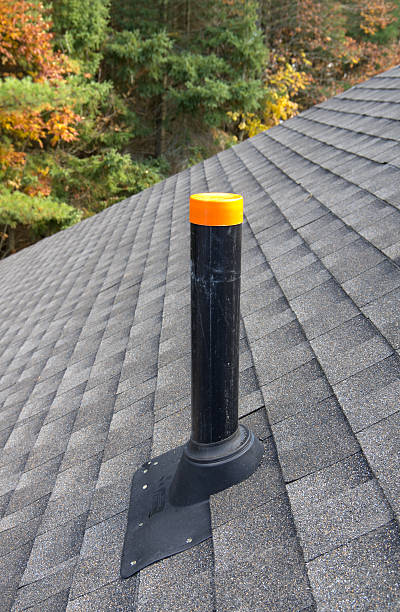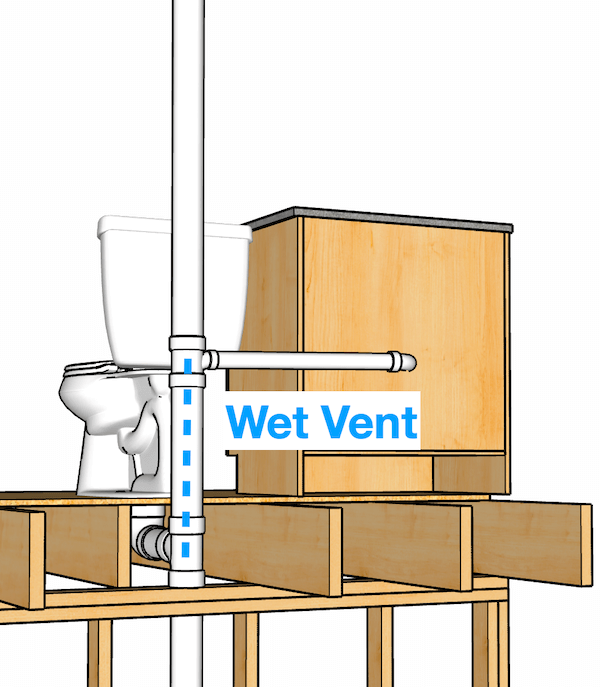What are your beliefs about What Is a Plumbing Vent and Why Is It Important?

Proper ventilation in plumbing systems is usually overlooked, yet it is important for preserving the performance and security of your home's plumbing. Ventilation helps control air pressure, avoid the buildup of harmful gases, and make sure the efficient elimination of waste. In this overview, we will certainly explore the relevance of correct pipes ventilation, how it works, and the advantages it brings to your plumbing system.
How Air Flow Works in Pipes Solutions
Air Pressure Law
Appropriate air flow keeps balanced atmospheric pressure within the plumbing system. When water moves through pipelines, it displaces air. Without adequate ventilation, this variation can create unfavorable stress, resulting in slow down drains pipes or siphoning of water from catches, which can cause unpleasant smells to seep into the home.
Protecting Against Sewer Gas Buildup
One of the most vital features of pipes vents is to stop sewer gases, such as methane and hydrogen sulfide, from building up within the home. These gases can position significant health risks and are very flammable. Vent pipelines permit these gases to escape securely outdoors.
Aiding in Waste Elimination
Air flow helps in the reliable elimination of wastewater by avoiding airlocks in the drainage system. When air can stream freely through the vents, it permits water and waste to flow smoothly with the pipes, decreasing the threat of blockages and backups.
Benefits of Proper Air Flow
Improved System Performance
Properly aerated pipes systems run much more effectively, with fewer obstructions, faster draining, and much less strain on the pipes. This efficiency expands the lifespan of the pipes system.
Improved Air Quality
By preventing drain gases from entering your home, proper ventilation adds to far better interior air top quality, making your living setting healthier and a lot more comfortable.
Protecting Against Water Damages
Sufficient air flow helps avoid water from being siphoned out of traps, which can lead to drain gases going into the home and triggering water damage over time.
Actions to Make Certain Appropriate Ventilation
Consulting Plumbing Codes
Constantly get in touch with regional pipes codes when creating or modifying your pipes system. These codes supply the necessary standards for proper airing vent and ensure your system fulfills security criteria.
Routine Inspection and Maintenance
Normal evaluations can aid identify possible ventilation issues before they end up being major problems. Upkeep jobs, such as cleaning air vent pipes and checking for obstructions, are essential for maintaining the system in good working order.
Expert Installment
For new installments or significant alterations, it's important to employ an expert plumbing. They have the proficiency to guarantee the ventilation system is appropriately created and mounted according to code.
Recognizing Air Flow in Plumbing
Ventilation in pipes describes the network of pipes that allow air to move via the drain system. These vents serve numerous functions, including managing air pressure within the pipelines, stopping sewer gases from getting in the home, and helping in the smooth circulation of wastewater.
Kinds Of Pipes Vents
Key Stack Vent
The primary pile vent, additionally called the vent stack, is the primary air vent in a pipes system. It expands from the main drain line up through the roofing, allowing gases to get away and fresh air to go into the system.
Branch Vent
Branch vents attach to the main stack vent and serve private fixtures, such as sinks, bathrooms, and showers. These vents make sure that each component has ample air flow to operate properly.
Air Admission Shutoff (AAV).
An Air Admittance Valve (AAV) is a one-way valve that allows air to enter the plumbing system without the need for a conventional vent pipeline expanding through the roofing system. AAVs are generally made use of in remodellings or areas where installing a conventional vent is unwise.
Indicators of Poor Air Flow in Pipes.
Slow Draining Fixtures.
If your sinks, bathtubs, or toilets are draining pipes slowly, maybe an indication of bad ventilation. Inadequate air circulation can develop a vacuum impact, making it difficult for water to drain appropriately.
Gurgling Sounds.
Gurgling audios originating from drains are usually an outcome of air being sucked via water traps as a result of unfavorable stress in the pipelines. This is a clear indicator of not enough ventilation.
Undesirable Odors.
Sewage system odors inside your home are a warning that your pipes system is not correctly aerated. This could indicate that sewage system gases are not being properly vented outside, bring about potentially harmful conditions.
Usual Ventilation Errors.
Insufficient Vent Sizing.
Making use of undersized air vent pipes can bring about poor air flow and stress imbalances in the system. It's essential to utilize vents that fulfill the details needs of your plumbing system.
Improper Vent Positioning.
Putting vents as well far from the fixtures they offer can decrease their performance. Proper placement ensures that air can flow freely and efficiently with the system.
Disregarding Code Needs.
Building codes give particular guidelines for plumbing air flow. Neglecting these codes can cause a system that falls short to operate appropriately and might cause pricey repairs or carcinogen.
Final thought.
Correct air flow is a crucial element of any kind of plumbing system, ensuring that it operates effectively and securely. By understanding the importance of ventilation, identifying the signs of inadequate air flow, and taking steps to maintain your system, you can prevent expensive issues and protect your home's air quality.
What is a Plumbing Vent and it's used for?
All plumbing systems in residential and commercials construction have a plumbing vent. It doesn’t just vent unwanted odors from the drainage system to the outside; it actually serves an important purpose by supplying air to the system.
The plumbing drainage system is actually called a drainage, waste and vent (DWV) system. When water flows down the piping, an air supply (vent) is needed to allow the water to flow. Think of the vertical pipe as a drinking straw. If you plug the top end of a straw, liquid won’t drain from it.
The DWV system in your building consists of a series of pipes connected to each fixture; they extend above each fixture, and the system terminates at an open pipe that extends through the roof. This piping allows air into the system and prevents unbalanced pressures in the piping.
?The vent also prevents the system from drawing water out of a trap at the fixture with the characteristic “glug-glug-glug” as the drain gasps for air. Plumbing traps should drain smoothly and never “glug” or gasp for air.
If you have a drain that empties slowly or gurgles as it drains, this may indicate a venting problem. If you flush a toilet and the sink gurgles, there’s definitely a vent problem. It is good idea to have a Plumber check this.
https://www.ameliashomeinspection.com/blog/what-is-a-plumbing-vent-and-its-used-for

I hope you enjoyed reading our section on The Upsides of Proper Ventilation in Plumbing Design. Thank you for finding the time to browse our content. Don't hesitate to take the opportunity to promote this write-up if you appreciated it. Thanks a lot for being here. Come back soon.
Book Instantly
Comments on “Correct Ventilation in Plumbing Systems: What It Matters”